Image
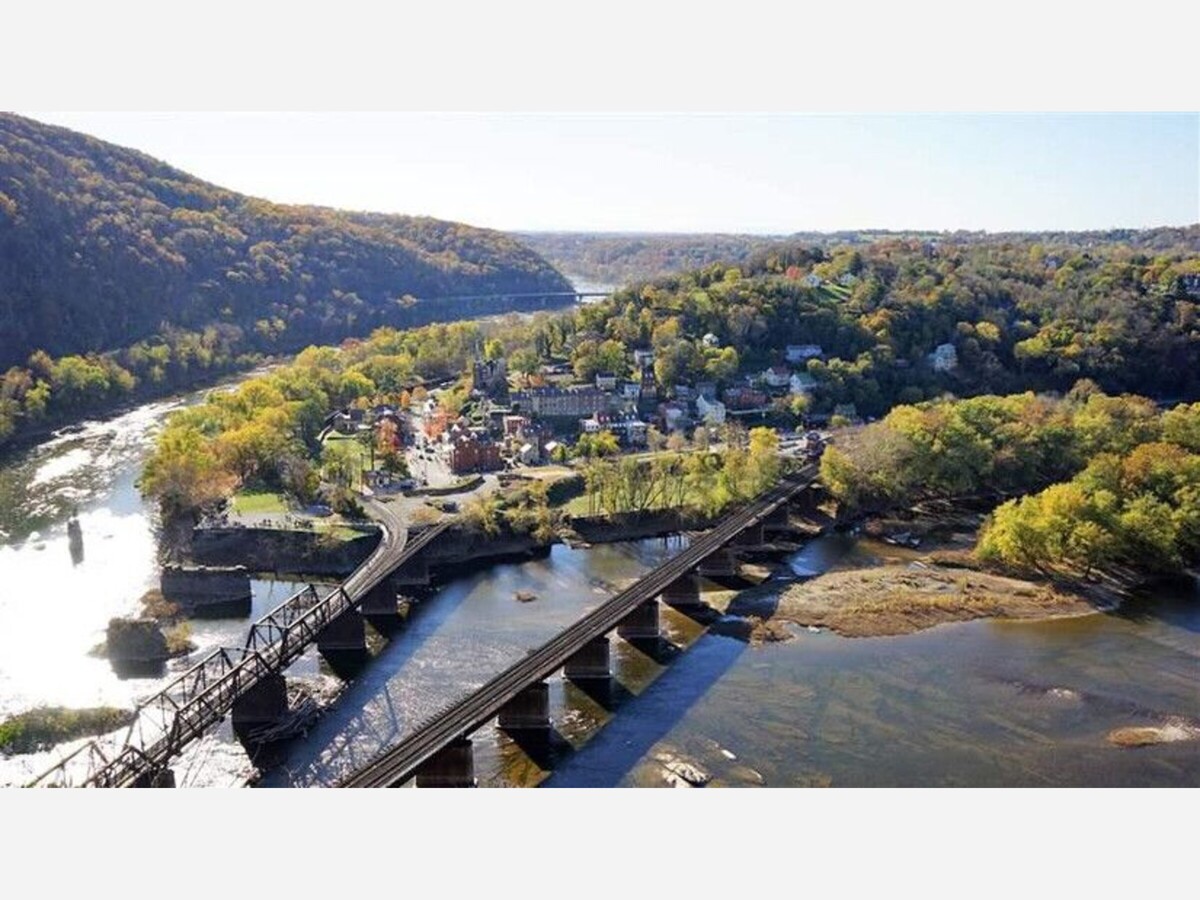
Five unique ways to explore the Chesapeake watershed’s National Park Service sites
You can do more than just take a hike at these National Park sites in the Bay region
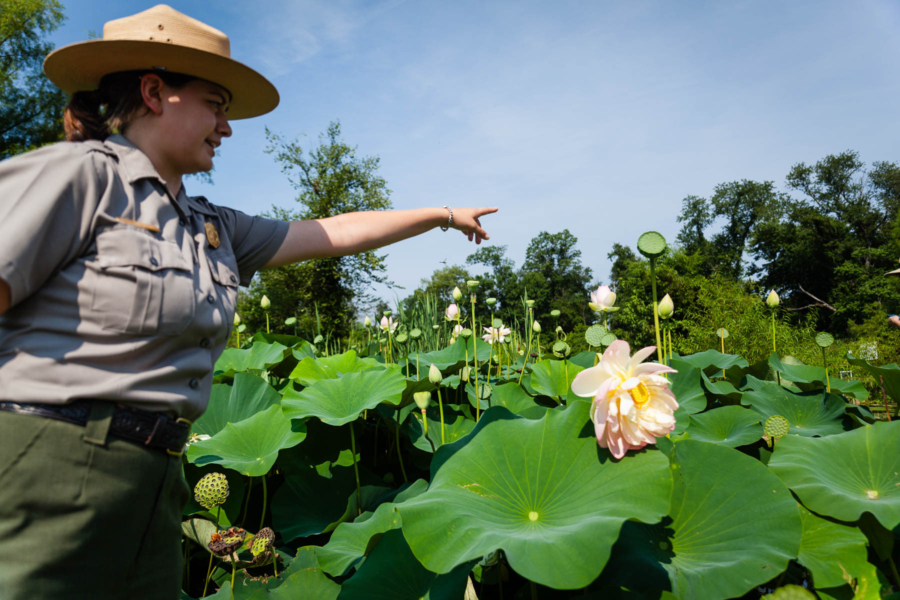 Interpretive ranger Chelcey Nordstrom points out double lotus flowers blooming at Kenilworth Park and Aquatic Gardens in Washington, D.C., on July 20, 2017. Every summer, the park's sea of pink lotus flowers blooms from June through mid-August. (Photo by Skyler Ballard/Chesapeake Bay Program)
Interpretive ranger Chelcey Nordstrom points out double lotus flowers blooming at Kenilworth Park and Aquatic Gardens in Washington, D.C., on July 20, 2017. Every summer, the park's sea of pink lotus flowers blooms from June through mid-August. (Photo by Skyler Ballard/Chesapeake Bay Program)For over a century, the National Park Service has worked to preserve the natural and cultural resources of the United States for enjoyment and education for generations to come. With a grand total of 433 National Park Service sites, it’s easy to become an environmental steward, learn about land conservation and take part in recreational activities. The Chesapeake Bay watershed is home to 54 National Park Service sites that include parks, monuments, historic sites and more.
Learn about just some of the fun activities you can participate in at some of these sites below.
Catoctin Mountain Park often attracts visitors for hiking as its natural beauty offers breathtaking views at all times of the year. While hiking is certainly an enjoyable activity on the trails, the park’s geological features make for an excellent place to rock climb.
Wolf Rock is under a mile from the park’s entrance and is a climbers' heaven. Named after the wolf-shaped boulder at the center of the boulder field, the prominent quartzite rock has fissures and fracture-crack systems as well as blocks and faces that make for a fun and free climbing experience.
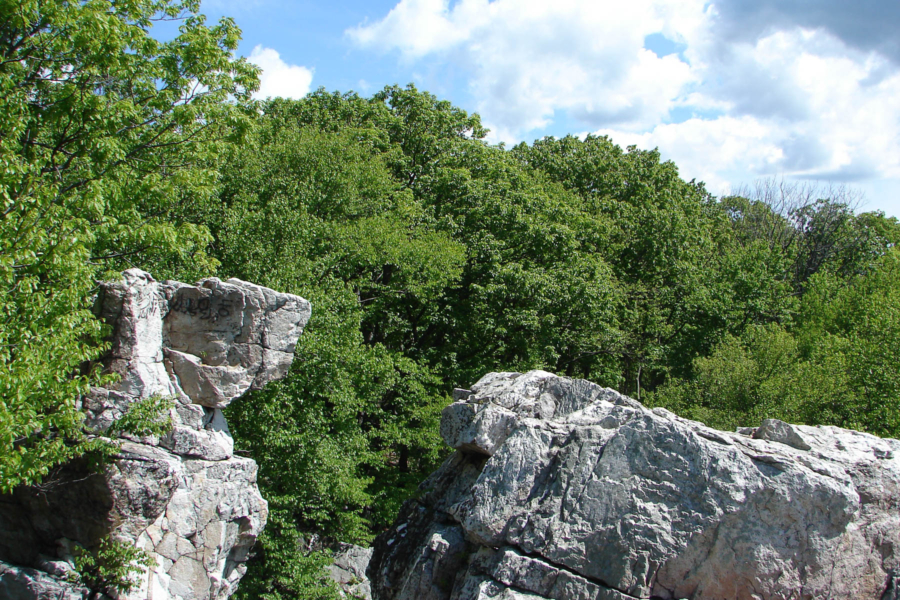 Wolf Rock at Catoctin Mountain Park gets its name from the wolf-shaped boulder at the center of the field. This rock is the only place in the park that is open for rock climbing. (Photo courtesy of National Park Service)
Wolf Rock at Catoctin Mountain Park gets its name from the wolf-shaped boulder at the center of the field. This rock is the only place in the park that is open for rock climbing. (Photo courtesy of National Park Service)With various trails to hike and bike, a historic town to explore and designated picnic spots to relax and refuel, you can stay busy for a whole day at Harpers Ferry National Historical Park. The park truly sets itself apart with access to the Shenandoah River, a great spot for fishing. The river has rich biodiversity, and commonly caught species include Smallmouth and Largemouth bass, Channel catfish, Bluegill sunfish and Walleye. Smooth conditions and fairly shallow waters make for a great experience for beginner and advanced anglers alike. Whether you're soaking in the scenic views or casting a line, Harpers Ferry offers the perfect blend of relaxation and outdoor adventure for all ages.
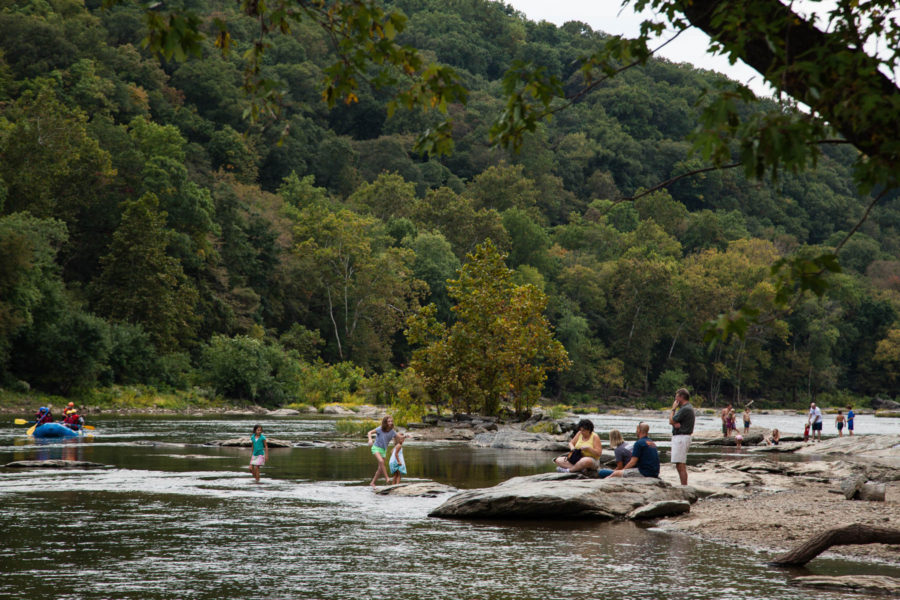 People visit the Shenandoah River just above where it meets the Potomac River at Harpers Ferry, W. Va., on Sept. 28, 2015. (Photo by Will Parson/Chesapeake Bay Program)
People visit the Shenandoah River just above where it meets the Potomac River at Harpers Ferry, W. Va., on Sept. 28, 2015. (Photo by Will Parson/Chesapeake Bay Program)For more experienced kayakers or avid whitewater rafters, the Mather Gorge of the Potomac River at Great Falls Park offers challenging rapids to take on. Visitors are welcome to bring their own equipment and raft on their own, though the National Park Service advises caution and to avoid rapids that are beyond your ability. If you’d like some support, there are many options for lessons and guided trips for beginners or those who want to learn. Located in the heart of one of the most historically prominent regions in the country, Great Falls Park allows visitors to explore history and nature alike.
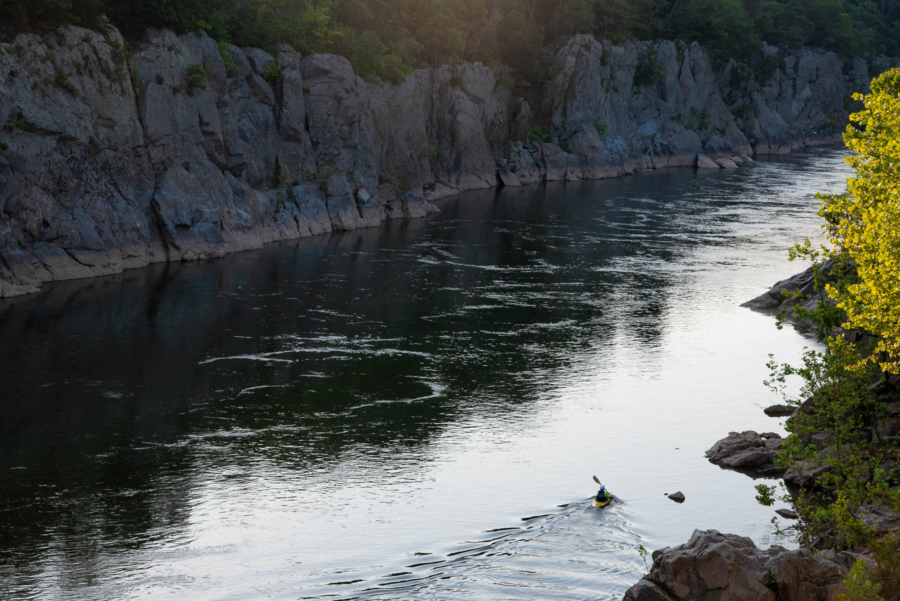 A kayaker paddles on the Potomac River in Great Falls Park in Potomac, Md., on July 13, 2018. Great Falls is often used as an area to train for white water kayaking, but there are restictions as to how close to the falls kayakers can go. (Photo By Kaitlyn Dolan/Chesapeake Bay Program)
A kayaker paddles on the Potomac River in Great Falls Park in Potomac, Md., on July 13, 2018. Great Falls is often used as an area to train for white water kayaking, but there are restictions as to how close to the falls kayakers can go. (Photo By Kaitlyn Dolan/Chesapeake Bay Program)The Battle of Gettysburg is one of the most prominent battles of the Civil War and the inspiration for President Abraham Lincoln’s infamous “Gettysburg Address.” Considered to be the site of a major turning point in the war, Gettysburg National Military Park has so many opportunities to learn the significant historical events that took place there. For the ultimate educational experience, start your trip at the park’s museum and take advantage of the multimedia storytelling, rare artifacts, interactive exhibits and historic background information.
Although tickets for the experience must be purchased, all proceeds benefit the park itself. Taking a tour of the museum provides a much more comprehensive understanding of the weight of the events that took place well over a century ago.
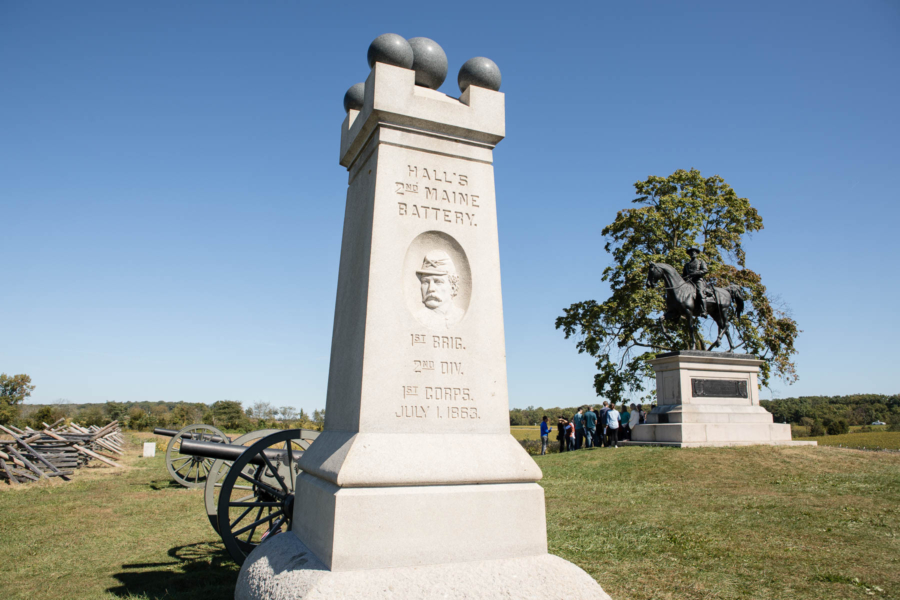 A monument stands near a statue of Major General John Fulton Reynolds of the United States Volunteers at Gettysburg National Battlefield in Adams County, Pa., on Oct. 2, 2017. (Photo by Will Parson/Chesapeake Bay Program)
A monument stands near a statue of Major General John Fulton Reynolds of the United States Volunteers at Gettysburg National Battlefield in Adams County, Pa., on Oct. 2, 2017. (Photo by Will Parson/Chesapeake Bay Program)Open all throughout the year, Kenilworth Park & Aquatic Gardens is a fantastic place to observe aquatic plants and animals throughout the season. Water lilies bloom in the spring, lotus flowers and pickerel weed emerge in summer, and during winter, look out for bald cypress and cattails. These plants attract a wide range of birds—over 245 different species reported throughout the year. Whether you’re an avid bird watcher or just looking for a fun afternoon outdoors, birding has always been a good reason to visit the gardens.
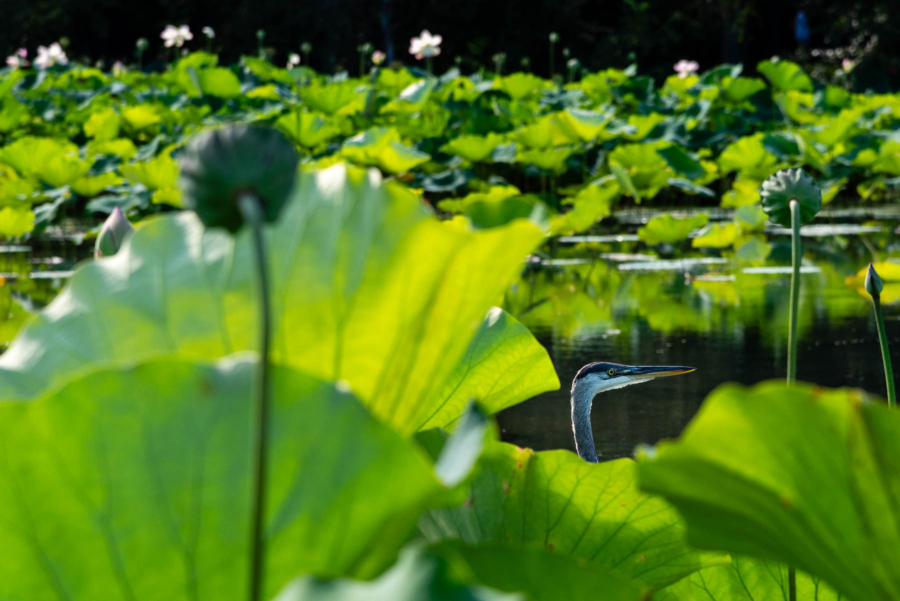 A great blue heron hunts at Kenilworth Aquatic Gardens in Washington, D.C., on Aug. 14, 2018. (Photo By Kaitlyn Dolan/Chesapeake Bay Program)
A great blue heron hunts at Kenilworth Aquatic Gardens in Washington, D.C., on Aug. 14, 2018. (Photo By Kaitlyn Dolan/Chesapeake Bay Program)With over 50 more sites in the region to choose from, find a National Park Service location near you to visit this Spring!